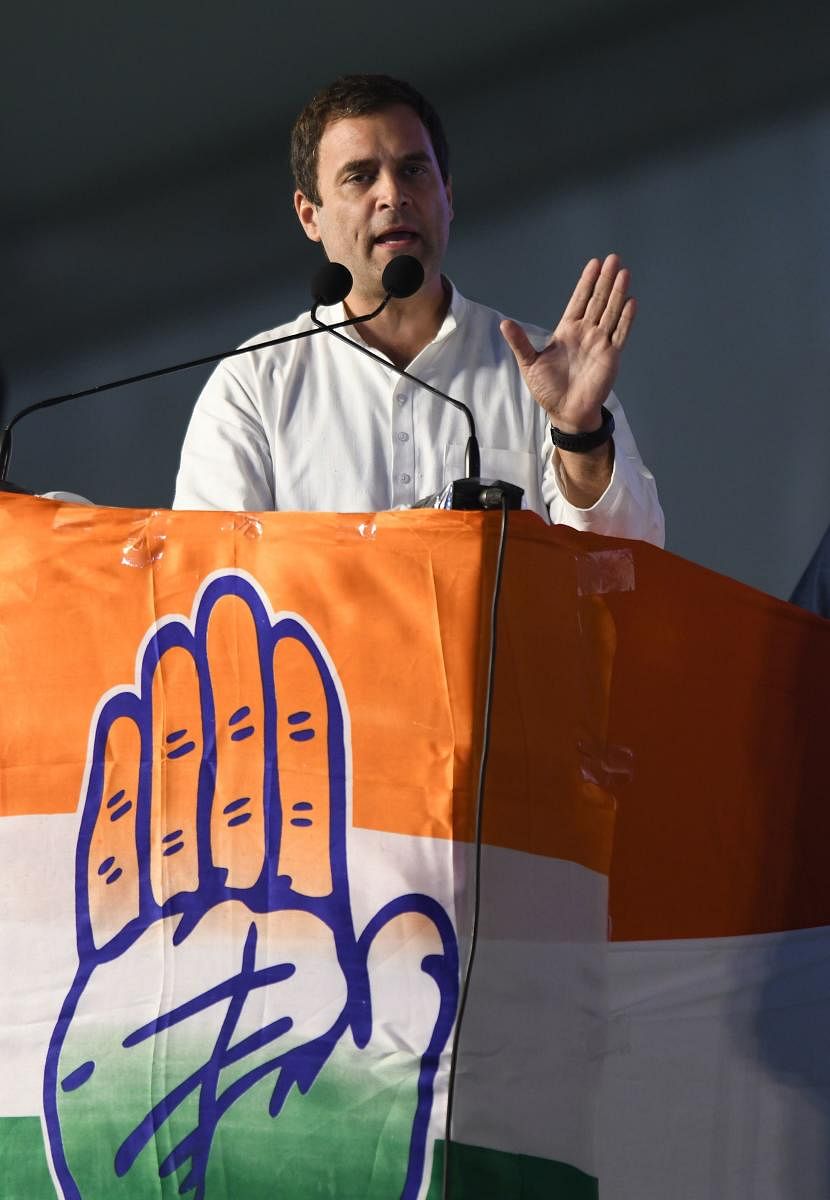
India has a unique voting behaviour. A paper by the Carnegie Endowment for International Peace says that the general principle ‘good economics can make for good politics’ is inapplicable in Indian politics as voting in India is largely based on parochial concerns of religion, caste, creed, etc. While competitive religiosity — which party leader visits temples, who pays respects at the Dargah — have become a part of poll campaigns to appease religious communities, a shift in the whole paradigm is observed as the Congress party, which is perceived to be a religion-neutral party, is seen vigorously trying to wrest the Hindu vote bank from the BJP.
What has prompted this shift in Congress pushing its president Rahul Gandhi to visit Hindu temples, meet saints and actively paint a picture of being a Hindu party?
The Congress in 2014 fought elections mainly by asserting its ideological differences with the BJP. The BJP was attacked for bringing about communal disharmony with its Hindutva ideology and for catering only to upper class capitalists.
The Congress portrayed itself as standing for its long-held values of secularism and serving people across the spectrum, especially in generation of employment and welfare schemes.
However, this strategy did not prove fruitful because of the displeasure of the people at the plethora of corruption charges against sitting ministers as well as at Congress’ inability to control the surge in prices. This led to a high anti-incumbency sentiment.
Further, other parties, such as SP and BSP, have over time reduced the share of Muslim votes that previously went en bloc in favour of Congress. As per one survey, the SP had a strong Muslim vote base, with 28.32% vote share in the 2017 Uttar Pradesh assembly elections, while Congress’ vote share was a meagre 7.53%.
The Centre for the Study of Developing Society’s post-poll survey (2014) suggested that while there was a magnetic effect pulling the votes towards the BJP from across various communities, the votes of Muslims still remained an exception to this.
However, this pattern was reversed in the 2017 UP elections, when the BJP bagged substantial Muslim votes from several Muslim majority constituencies that totalled up to a massive 41.6% overall vote share for the party.
Thus, the Congress can no longer afford to depend on the monolithic vote bank of the Muslim community and is therefore being compelled to change its strategy and make attempts to challenge the BJP on its own turf — the Hindu vote bank.
The BJP, on the other hand, came up with a two-fold strategy to conquer the 2014 general elections: firstly, by promising a corruption-free and good governance and by tactfully engineering slogans such as ‘Sab ka Saath, Sab ka Vikas’ that gave an impression of inclusivity to an extent.
Secondly, it brought in Narendra Modi as the face of the party — a ‘chaiwala’ signifying the common man who stood up to challenge the high order — dynastic politics.
Several psephologists opined that this approach appealed to masses across the religious spectrum.
Apart from this, in multiple instances, the BJP portrayed the Congress as a ‘pro-Muslim’ party and projected it as being detrimental to the interests of the Hindu majority. This resulted in BJP polarising Hindu votes in its favour and the Congress lost a substantial portion of Hindu votes. Thus, the Congress party faced the double whammy of losing its traditional support of Muslim votes as well as erosion of Hindu support.
Learning lessons from previous elections, the Congress has now shifted its stand and adopted a strategy that seems like a page out of the BJP’s playbook. This is particularly evident in its game plan in the ongoing elections in five states — Chhattisgarh, Madhya Pradesh, Rajasthan, Telangana and Mizoram.
While campaigning for the Madhya Pradesh elections, the Congress extended this strategy. Rahul Gandhi explicitly said that the Congress was a party of Hinduism.
This was coupled with an increase in the symbolic references he made from the Mahabharata in his campaign speeches.
In Madhya Pradesh, the Congress has also promised to build Gaushalas (cow sheds) in every gram panchayat if voted to power, another move intended to appease Hindu voters.
The increasing focus on his temple visits — be it to Kailash Mansarovar or to the Sringeri Mutt — seems to have larger political implications. Moreover, there is an attempt to repeatedly assert his Brahmin identity (janeu-dhari) and that he is a ‘Shiv-bhakt’, statements first made during his visit to the Somnath temple during the Gujarat elections last year.
This kind of flirting with soft-Hindutva may be safe so long as it does not favour any one religion at the cost of another.
The Congress should ensure that it plays this religious card in a fair and equitable manner to all religions. Realpolitik may justify this paradigm shift in the Congress party’s electoral campaign strategy. B
ut, in a country like India, where the vote bank behaviour is largely parochial in nature, the increasing trend of playing the religious card can open doors for an unwelcome identity politics and sow the seeds of communal rifts.
In the longer run, the Nehruvian ideal of secularism is essential as a stronger recipe for a healthy democracy.
Let’s hope that the Congress sooner than later returns to its religion-neutral stance and plays its game of politics more on the issues of development rather than on religious grounds.
(The writer is a law student at the National Academy of Legal Studies and Research (NALSAR).